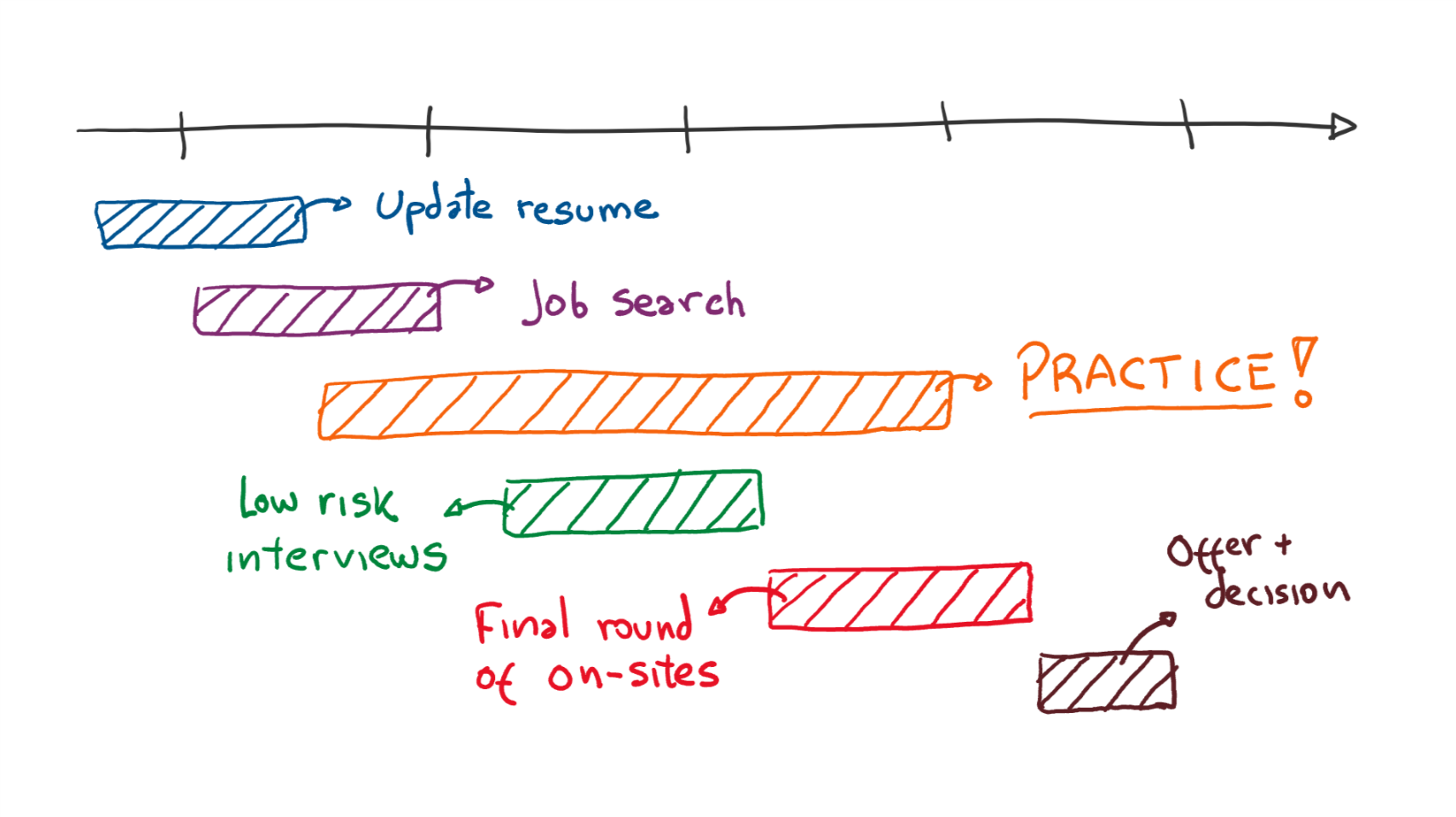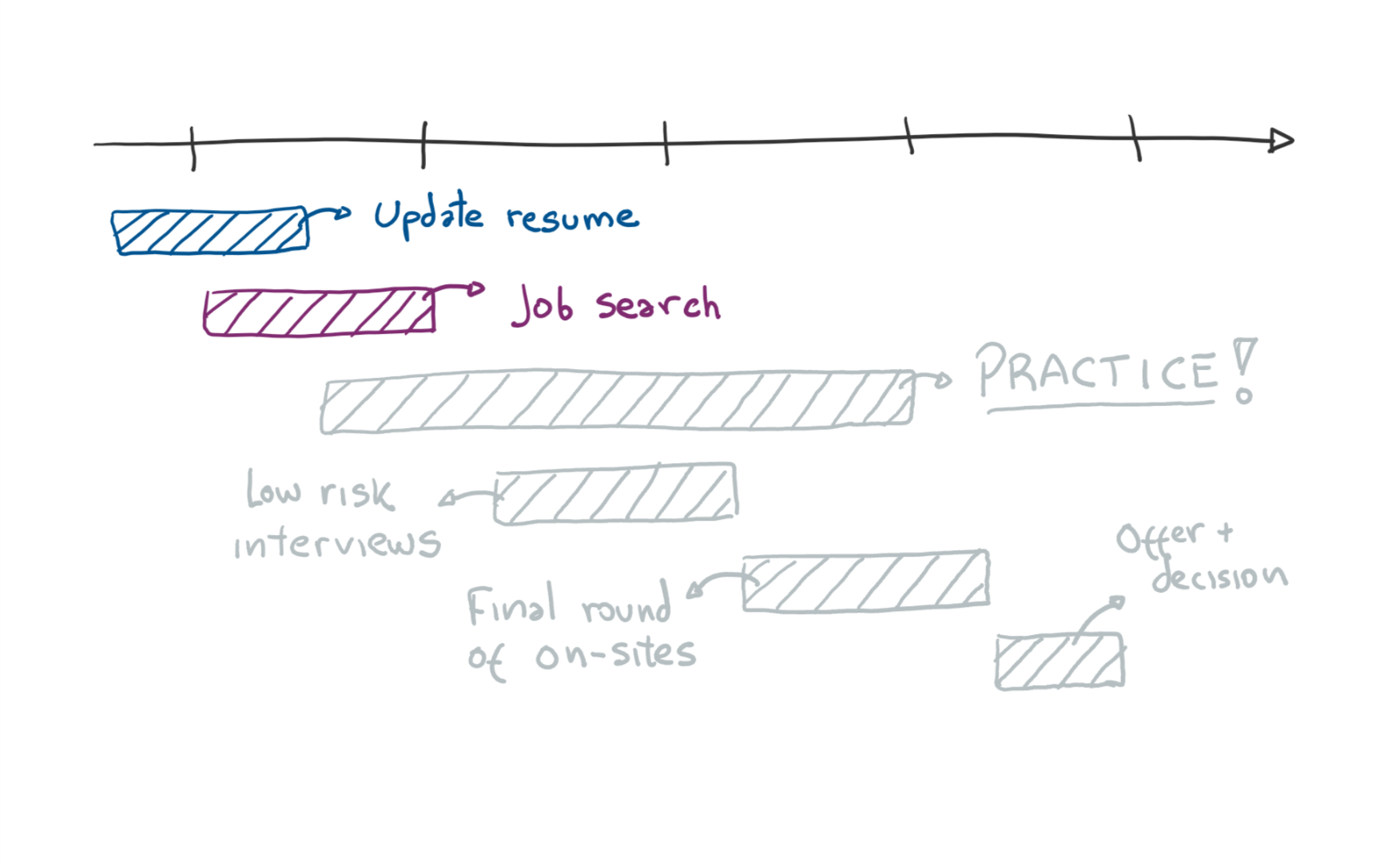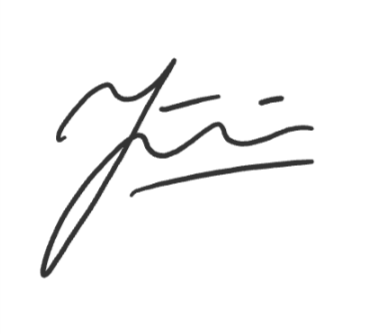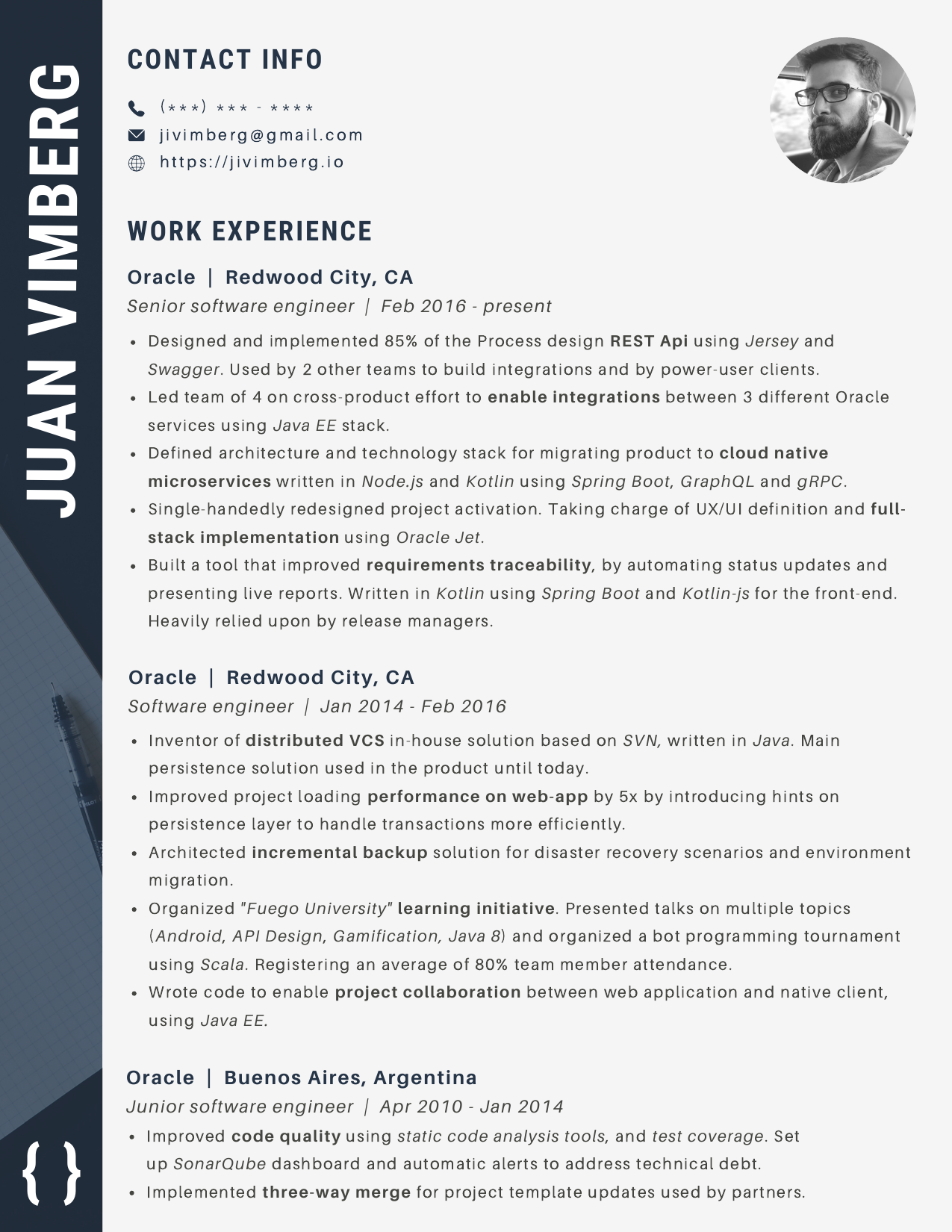How to Prepare for the Silicon Valley Interview - Part 1
For the past few months, I’ve been interviewing with different companies on the Valley, from some of the well-known giants to promising startups. Over the next couple of weeks I’ll be publishing a series of articles about the things I learned in the journey. This is Part 1.
Interview process, the big picture
This is an overview of what the whole process entails:

I found that dividing the whole process in parts helped me build a schedule and create deadlines for the different phases.
This article will cover the first two phases:

But before we jump to the first phase let’s talk about the interview timeline.
The timeline
How much time do you need to go through all of this?
Well, it depends… For me it took around four months but YMMV. If you search online you’ll find plenty of study plans to follow. But I think the best thing you can do is to take it at your own pace.
Here are some tips I used to set up my interviewing schedule:
- Divide the preparation in phases just like I did on my timeline. Then Create a new calendar on Google Calendar and use it to set reminders and deadlines for each of the phases of the preparation. This will give you a nice visual overview of where you stand in the process and how much time you’ve left before moving to the next phase.
- I also used Trello to create a list of tasks to complete. I’d sort them by priority and grab a few to tackle each day. The trick is to try to break them down small enough so you can complete each of them in one sit.

Updating your resume
Sooner or later you’ll have to sit down and face the dreadful task of updating your resume.
There’s a ton of advice online on how to write a good resume. Instead of trying to sum it all up I’m going to give you the 3 tips that helped me the most:
- Show your accomplishments. Your bullet points for each role should focus on your achievements. For example: _“Improved project loading performance on web-app by 5x by introducing hints on the persistence layer to handle transactions more efficiently”_
- Don’t include everything. You’re not writing your autobiography, there’s no need to include every single task you’ve ever worked on. Adding extra information only decreases the signal to noise ratio. Trim down your resume to only keep the best of the best. One or two pages max!
- Make it look awesome. You don’t get a free pass on style just because you’re a developer and not a designer. Making a pretty resume is going to take you longer, but believe me: recruiters do notice it and appreciate the effort. Going the extra mile will set you apart. For an easy to use graphic-design tool try Canva, I can’t recommend it enough.
As an example this is what my resume currently looks like:
As with any piece of good writing it’ll take many iterations to get there. Start with a shitty first draft and share it with your friends and recruiters to get feedback and make improvements.
Behavioral questions
Since you’re working on your resume you’ll want to start preparing for the behavioral questions too. These are the questions that get asked before the coding interview. Their purpose is to give the interviewer a better sense of the accomplishments listed on your resume, and to assess whether you’re a good fit with the company culture. There are 3 parts to the behavioral questions preparation:
The first thing you should prepare is a two-minute introduction of yourself. This is your resume condensed to an elevator pitch. Cover a little bit about your background, your current job responsibilities and any side-project worth mentioning. If you’re curious this is what my introduction looked like.
The second thing is to prepare for the typical interview questions such as “Why are you leaving your current job?” or “What are your strengths and weaknesses?”.
Finally, you should prepare a couple of stories for questions like: “Tell me about a time you made a mistake” or “Tell me about a time when you had conflicts interacting with one of your coworkers and how you handled it”. Following the advice in Cracking the Coding Interview1 I created a table like this:

Pro-tip: You can create a document with all this stuff and use it as a cheat-sheet during your phone call interviews. Believe me, after a few calls you’ll not even need it.
The best advice I came across for Behavioral questions was from Cracking the Coding Interview and Cracking the Tech Career both by Gayle Laakmann McDowell. You can check a condensed version of the behavioral question section of the book in this Soft Skills Cheatsheet.
Where to look for new roles
So you’re ready to move on to greener pastures, where do you start looking?
The first obvious answer is LinkedIn. Just make your profile as sexy as possible (make sure you disable notifications if you want to be discrete) and wait for recruiters to start pinging you.
If you’re looking for a job at a startup, Angel List is a great place to start. To learn specifics about a particular startup head to Crunchbase where you’ll find information about the funding rounds the company has been through, the investors, the team, etc.
If you already have a good sense of what you’re looking for, I can recommend using Woo.io. You’ll need to create a profile (you can import most of it from LinkedIn) and set your job expectations (role, technologies, company size, location, etc.). The site will magically find jobs that match your search and send them to you on a daily basis. You can then review the openings, and if they’re not of your liking, you can reject them (optionally) including a reason why it’s not a good fit. Woo will learn from your feedback and refine the search for future approaches.
On the other hand, if you’re unsure about what you want to do next you can try this trick: Pick a hiring site and skim through the job postings. Play it by gut; when something catches your eye, try to reflect on why. Was it the technology stack? The company values? Maybe the location? Don’t worry if you can’t put your finger on it, just keep going. Repeat this enough times and you’ll start getting a sense of what makes you tick.

Research the company and team
Your next job is where you’ll spend most of your waking hours for the next few years. You’ll probably end up spending more time with your colleagues than with some of your family members. And yet we put more effort into reading reviews about some new gadget we plan to buy, than learning about our next employer.
To make things harder, trying to learn about the culture of a company might prove to be a challenge. While most companies include something about culture and values along with their job postings, more often than not it’s just some generic marketing lorem ipsum. Too abstract to actually give us any clue about how the company values are present in the day-to-day tasks.
By far, the best way to discover what a company is really like, is by getting a first hand account from somebody working there. Tap into your network! See if any of your contacts knows somebody and can help you with the introductions (LinedkIn Degrees of Connection is perfect for this kind of thing).
If you don’t happen to know anybody, you can try reaching out to the developers that write the company’s tech blog. Tech conferences2 and Meetups also provide an excellent opportunity to talk to engineers and get a first-hand impression of what the culture is like.
Finally, you can always fall back to sites like Glassdoor3 and Blind; just take comments with a grain of salt.
That’s all for today, hope you found it useful! On my next article I’ll talk about how to prepare and practice for the coding interview. Stay tuned!

Special thanks to: @rcruzjo, @patriciob, @pgveiga and @luketua for helping me edit and improve this series.
-
I’m going to talk more about this book in the next article. For now the only thing you need to know is that if you only have money for one interview book, then this is the one.↩
-
You don’t have to pay full price for the conference if you’re only going to network. Many big conferences offer some kind of Discovery pass that will grant you access to the Exhibition halls where the companies set up their booths.↩
-
Pro-tip: If the company is big, filter reviews by job title to get a more accurate sense of the culture.↩

